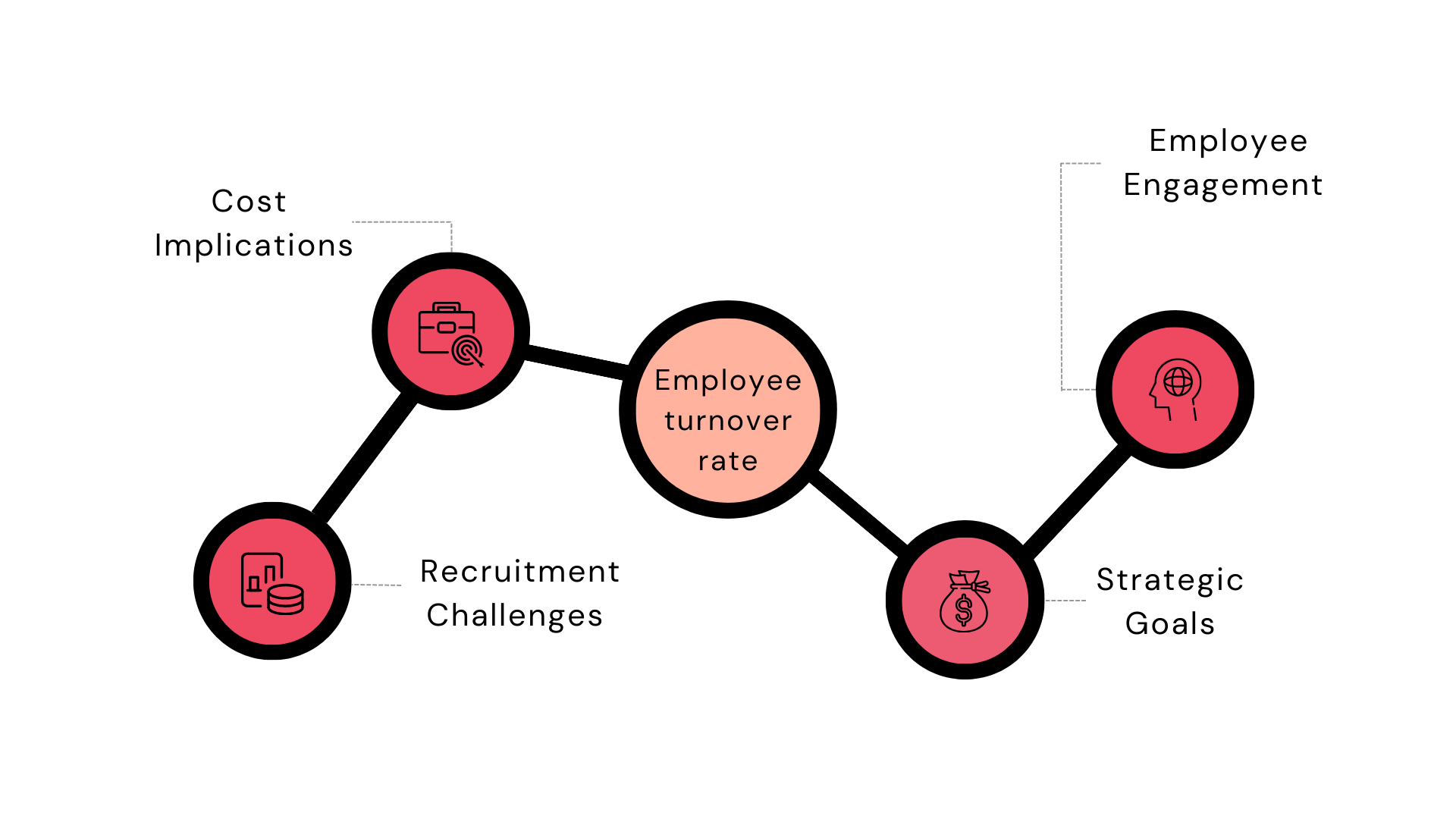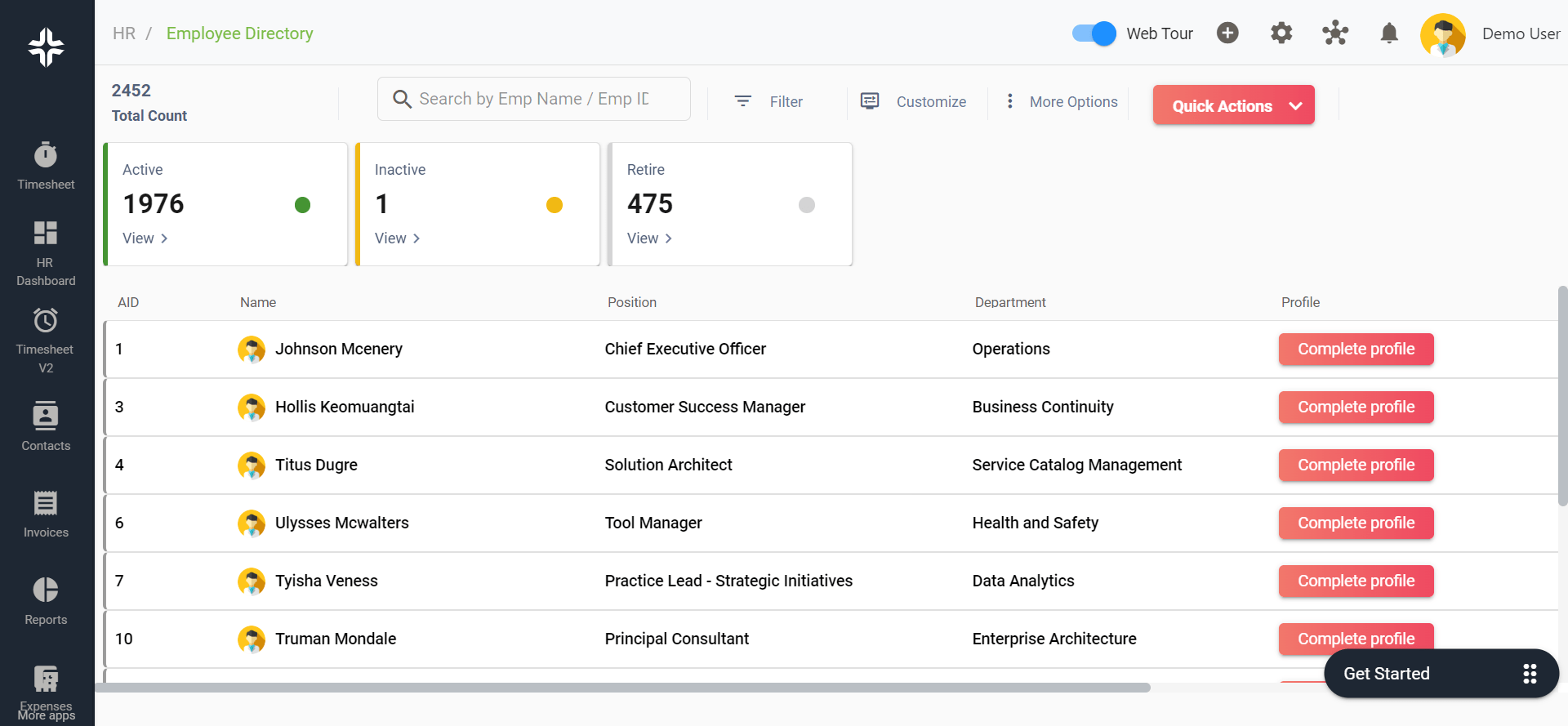Home » PSApedia
Employee Turnover Rate
Measure and Improve - Learn How to Manage Employee Turnover Rate Effectively.

What Is Employee Turnover Rate?
Employee turnover rate is a critical metric for businesses aiming to optimize their workforce. High turnover can be costly, impacting productivity and morale. To combat this, companies must implement effective retention strategies, foster a positive work environment, and offer competitive compensation packages. Monitoring and addressing employee turnover rate proactively can lead to a more stable and satisfied workforce, ultimately boosting long-term success.
The Employee Turnover Rate is a metric that quantifies the number of employees who leave an organization within a specified period, relative to the average number of employees during that period.
Why Is Employee Turnover Important?
Employee turnover can have significant financial and operational implications for a business. High turnover often leads to increased recruitment and training costs, a decrease in productivity, and potential disruption in service continuity.
Moreover, frequent departures may affect team morale and cause the loss of invaluable institutional knowledge. With this in mind, efficient resource management is paramount.

Why Is Employee Turnover Important?
How to Calculate Employee Turnover Rate?
The formula to calculate the turnover rate is:
Turnover Rate = (Number of Employees Leaving / Average Number of Employees) × 100
Example: If a company started the year with 100 employees, ended with 110 employees, and 20 employees left during the year, the turnover rate would be:
Average Employees=(100+110)/2=105
Turnover Rate=(20/105)×100=19.05%
Employee Turnover Rate vs Retention Rate
While turnover rate focuses on departures, the retention rate measures the proportion of employees an organization manages to retain over a period.
High retention often signifies good employee satisfaction, robust company culture, and effective management strategies. Effective communication and efficient project management play crucial roles in fostering a positive work environment, contributing to higher retention.
| Metric | Employee Turnover Rate | Retention Rate |
|---|---|---|
| Calculation | (Number of employees who left / Average total number of employees) x 100 | 100% – Employee Turnover Rate |
| Purpose | Measures the rate at which employees leave the organization. | Measures the rate at which employees are retained by the organization. |
| Interpretation | Higher turnover rates indicate instability and potential issues. | Higher retention rates signify a stable and satisfied workforce. |
| Desired Outcome | Typically, lower turnover rates are preferred. | Higher retention rates are desired. |
| Benchmarking | Industry-specific benchmarks may apply. | Industry-specific benchmarks may apply. |
| Action Implication | High turnover may require recruitment and retention strategy improvements. | High retention suggests effective HR practices. |
The Impact of Employee Turnover
Employee turnover can have a significant impact on organizations. High turnover rates can disrupt workflow, decrease productivity, and increase recruitment costs. Moreover, the loss of experienced employees can result in a knowledge drain, hindering innovation and growth. Employee turnover doesn’t just impact the bottom line; it can also affect:
- Team Morale: Frequent departures can demotivate remaining team members.
- Company Reputation: High turnover rates might dissuade potential hires.
- Service Delivery: With employees leaving, service consistency may waver, impacting customer experience.
- Institutional Knowledge: Experienced employees departing mean the loss of their unique insights and expertise.
By understanding these challenges, businesses can better strategize and implement efficient business operations.
Addressing Employee Turnover better
How can KEBS help? With its range of tools designed for business optimization, KEBS offers solutions to address high employee turnover. Tools like Employee 360 can offer insights into employee performance and engagement.
Moreover, ticket management software ensures smooth workflows, while finance management software keeps financial aspects streamlined. All these facets play into creating a conducive environment for employees, reducing the chances of turnover. For those looking to delve deeper into optimizing their business operations and reducing turnover, KEBS has a comprehensive eBook on PSA.

KEBS Employee Directory
Ready to Address Employee Turnover with KEBS? Dive deeper into what KEBS has to offer. Schedule a demo or contact us today!



